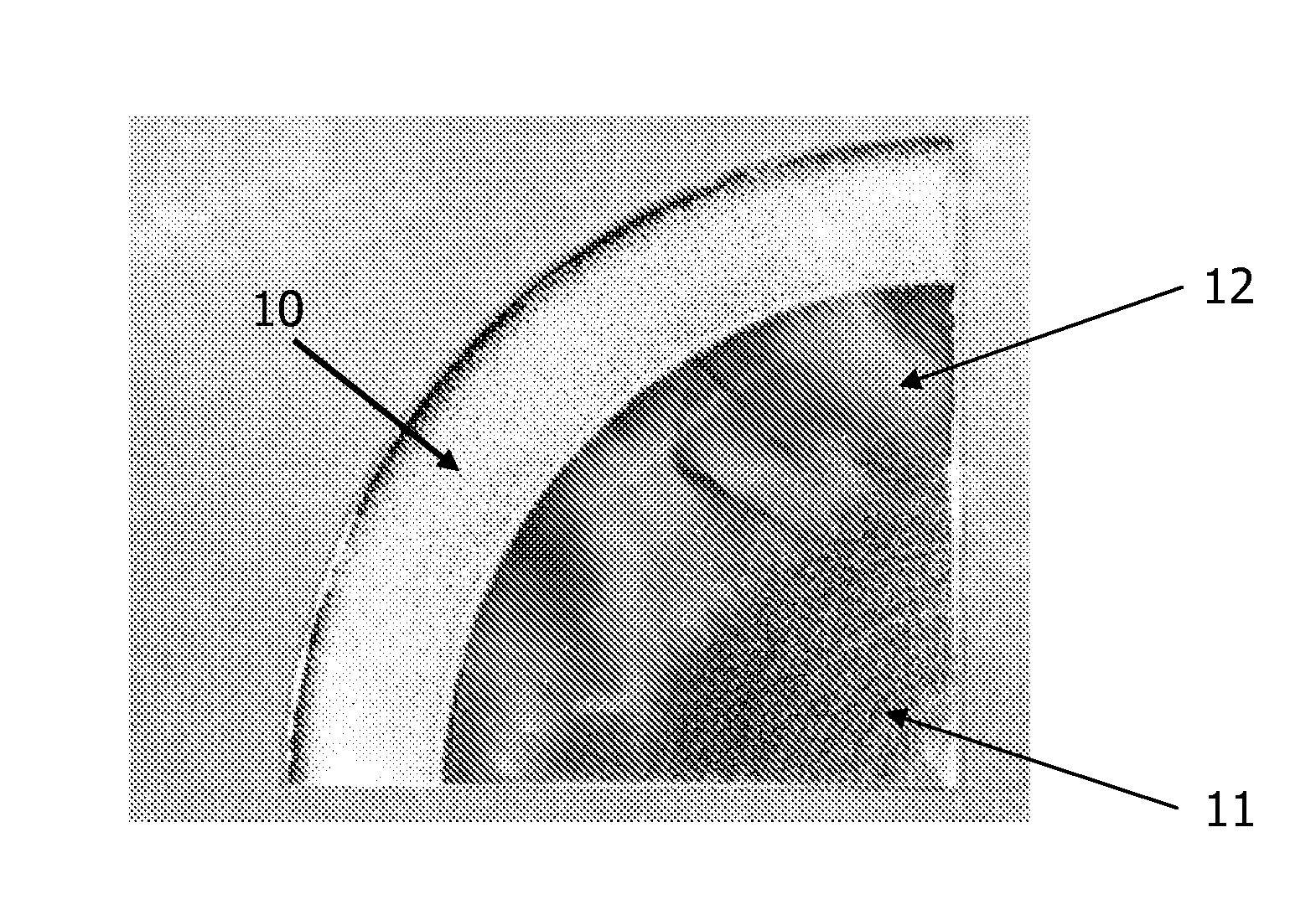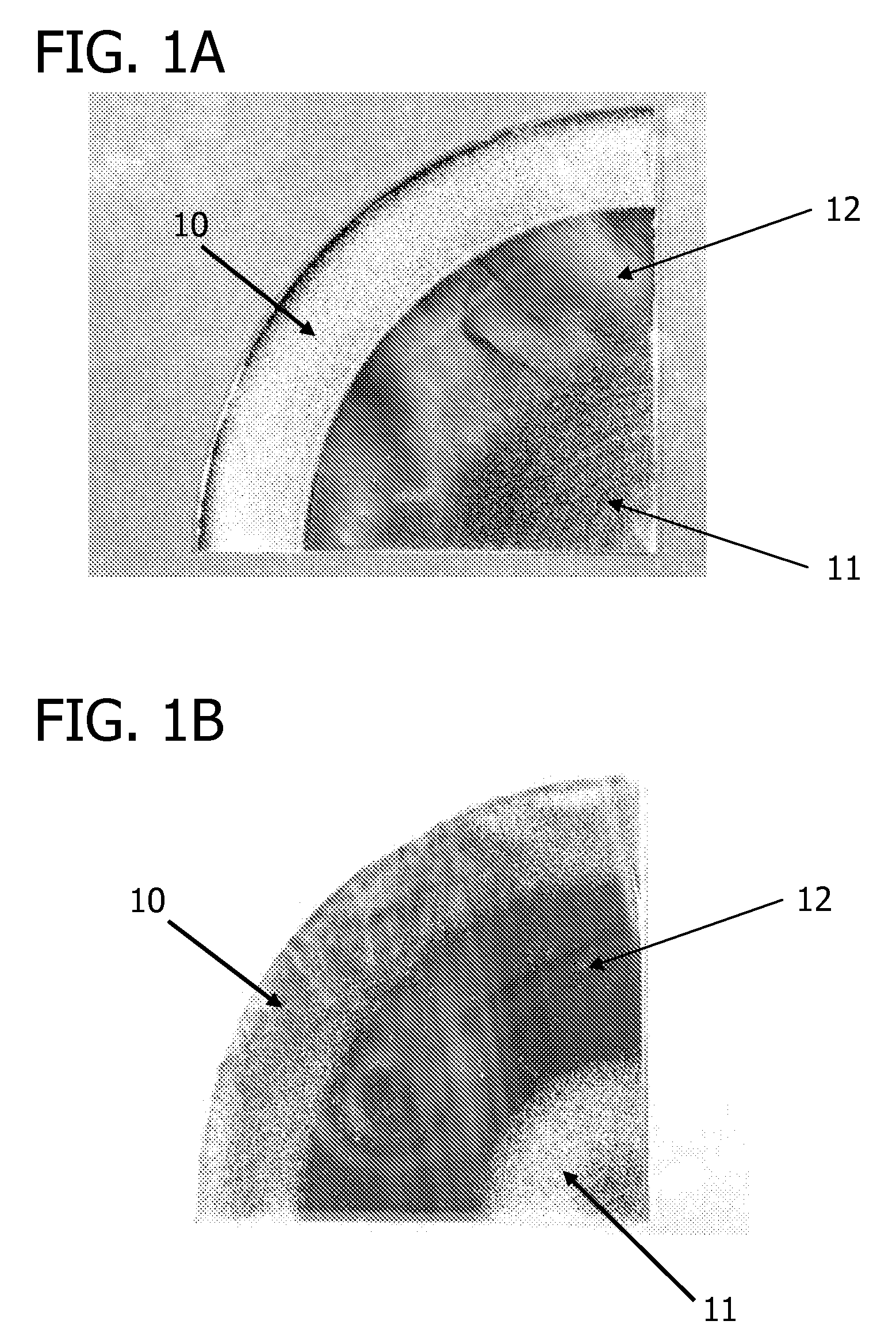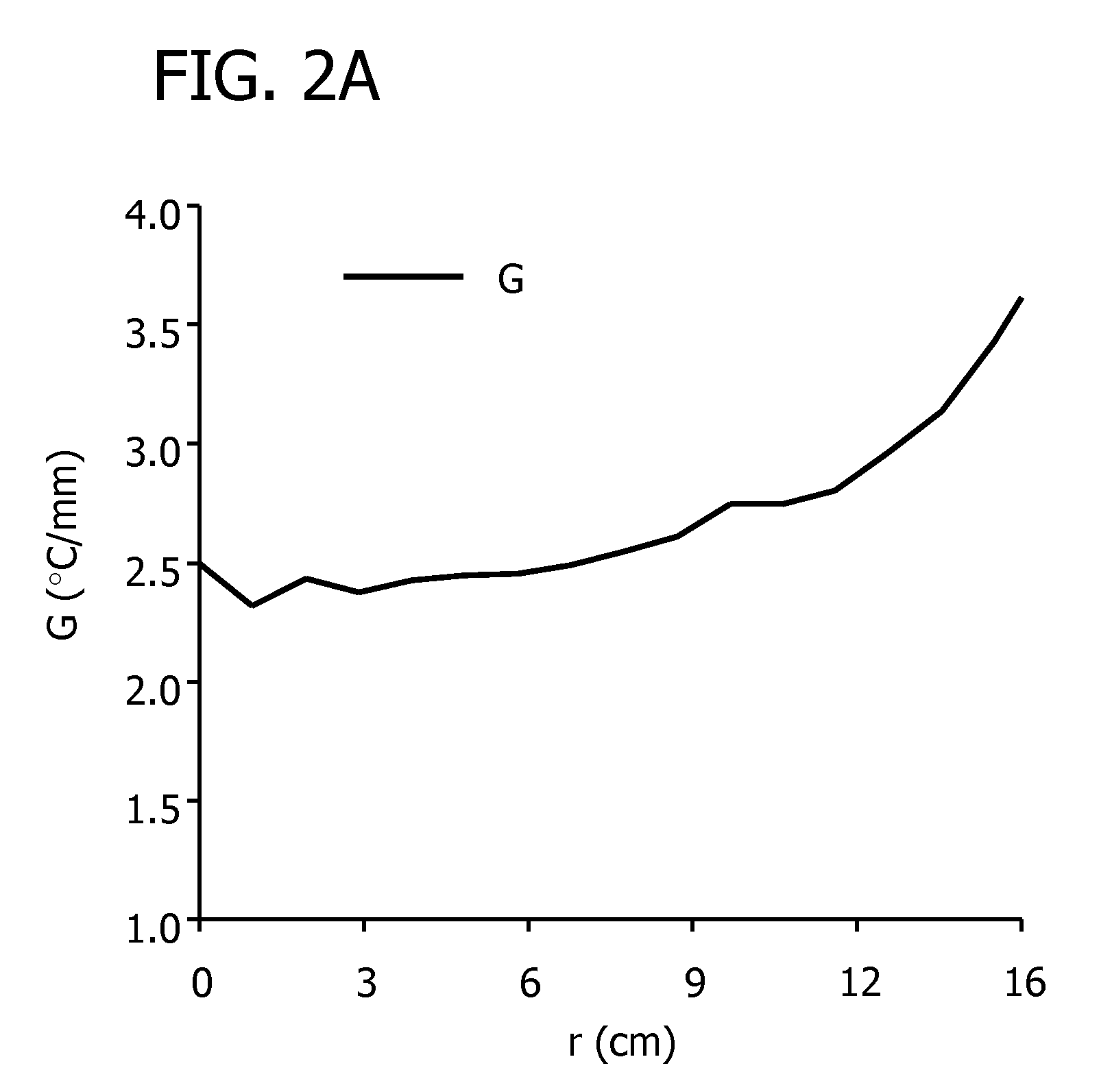Silicon material with controlled agglomerated point defects and oxygen clusters induced by the lateral surface
a technology of oxygen clusters and lateral surfaces, which is applied in the direction of silicon compounds, separation processes, and under a protective fluid, can solve the problems of intrinsic point defects not being mobile within commercially practicable periods of time, challenging restrictions imposed by microelectronic devices on the quality of silicon substrates, and numerically expensive numerical simulations based on predicting the size distribution of microdefect populations at every location in the crystal
- Summary
- Abstract
- Description
- Claims
- Application Information
AI Technical Summary
Benefits of technology
Problems solved by technology
Method used
Image
Examples
Embodiment Construction
[0069]In accordance with the present invention, it has been discovered that, when attempting to grow a single crystal silicon ingot according to the Czochralski method under growth conditions such that at least a segment thereof is substantially free of agglomerated intrinsic point defects, an annular or peripheral ring (i.e., an “edge ring”) of some measurable width, which extends radially inward from about the lateral surface of the ingot, may be formed which contains agglomerated vacancy defects (i.e., “D-defects”) and / or oxygen clusters. More specifically, it has been discovered that, in a process for preparing a CZ single crystal silicon ingot, wherein the growth velocity, v, and the axial temperature gradient, G (or, as further detailed herein, more accurately the “corrected” or “effective” axial temperature gradient, “Gcorrected” or “Geffective”, respectively) are controlled such that, at a given axial position, the value of v / Geffective is substantially near the critical val...
PUM
| Property | Measurement | Unit |
|---|---|---|
| temperature | aaaaa | aaaaa |
| temperature | aaaaa | aaaaa |
| temperature | aaaaa | aaaaa |
Abstract
Description
Claims
Application Information
 Login to View More
Login to View More - R&D
- Intellectual Property
- Life Sciences
- Materials
- Tech Scout
- Unparalleled Data Quality
- Higher Quality Content
- 60% Fewer Hallucinations
Browse by: Latest US Patents, China's latest patents, Technical Efficacy Thesaurus, Application Domain, Technology Topic, Popular Technical Reports.
© 2025 PatSnap. All rights reserved.Legal|Privacy policy|Modern Slavery Act Transparency Statement|Sitemap|About US| Contact US: help@patsnap.com



